How to Help Clients Training for a Bike Race (Free Guide)
Understanding how to guide clients training for a bike race can add a new dimension to your personal training services. However, it’s vital to have the right knowledge and tools to effectively assist these clients. Certain features of personal training software can prove to be incredibly useful in this context. Discover how to guide clients training for a bike race and what PT training tools you’ll need in this comprehensive guide.
- Assisting clients in bike race training demands a thorough approach that integrates endurance workouts, strength and conditioning for the lower body, and core exercises.
- Most bike race training clients will benefit from a systematic training plan that progressively increases their cycling intensity and distance, while also incorporating cross-training to avoid overuse injuries.
- Implementing workout and assessment software can help in monitoring progress, scheduling workouts, and managing recovery, ensuring your clients reach their bike race goals safely and effectively.
Helping clients prepare for a bike race can offer personal trainers a gratifying opportunity to enhance their clients’ fitness journeys significantly.
To help clients training for a bike race effectively, it’s important to not only understand the specifics of cycle training but also have the right tools to manage progress and modify training plans; this is where personal training software becomes invaluable. By leveraging the features offered by the best personal training business management software, you can guide clients in their bike race training in a way that maximizes their performance and minimizes the risk of injury.

Experience the leading personal training software from Exercise.com by booking a demo today!
The Benefits of Training for a Bike Race
Training for a bike race can be an exhilarating and challenging experience. Whether your clients are seasoned cyclists or beginners, as a trainer, it is your responsibility to provide them with the necessary guidance and support to help them achieve their goals. In this article, we will explore various aspects of bike race training, from the benefits of training to the specific strategies for success.
Participating in a bike race offers numerous benefits, both physical and mental. Regular training helps improve cardiovascular fitness, strengthens muscles, and increases endurance. It also enhances mental focus, discipline, and overall well-being. It provides an opportunity for personal growth and pushing one’s limits. Recognizing and communicating these benefits to your clients will motivate them throughout their training journey.
Additionally, training for a bike race can have positive effects on your social life. Joining a cycling community or team can provide a sense of camaraderie and support. You can meet like-minded individuals who share your passion for cycling and form lasting friendships. Training together and participating in group rides can also add an element of fun and motivation to your training routine. The social aspect of training for a bike race can make the entire experience more enjoyable and rewarding.
Setting Goals and Planning for Success
A vital step in helping your clients prepare for a bike race is setting goals and creating a comprehensive training plan. Start by assessing their current fitness level, determining their race distance, and establishing a realistic timeline. Collaborate with your clients to establish short-term and long-term goals. Break down their training plan into phases, focusing on building a strong foundation, gradually increasing intensity, and allowing for sufficient recovery periods.
Once the goals and training plan have been established, it is important to regularly monitor and track progress. Encourage your clients to keep a training journal or use fitness tracking apps to record their workouts, track their performance, and make adjustments as needed. Regularly reviewing their progress will help them stay motivated and make necessary modifications to their training plan.
In addition to physical training, it is crucial to educate your clients about proper nutrition and hydration for optimal performance. Provide guidance on pre-race meals, hydration strategies during training sessions, and recovery nutrition. Emphasize the importance of fueling their bodies with the right nutrients to support their training and enhance their race-day performance.
Choosing the Right Bike for Racing
Selecting the appropriate bike for racing is crucial. Consider factors such as the type of race, terrain, and your clients’ individual preferences and body proportions. Provide guidance on frame size, bike components, and different types of bikes, such as road bikes, mountain bikes, or triathlon bikes. Encourage your clients to test-ride various options before making a purchase.
When it comes to frame size, it is important to find a bike that fits your clients’ body proportions. A bike with the correct frame size will ensure optimal comfort and efficiency during races. Advise your clients to consult a professional bike fitter who can help determine the appropriate frame size based on their measurements and riding style.
In addition to frame size, the choice of bike components can greatly impact racing performance. Discuss the importance of selecting high-quality components, such as gears, brakes, and wheels, that are suitable for racing. Emphasize the benefits of lightweight and aerodynamic components, as they can improve speed and maneuverability on the racecourse.
Essential Gear and Equipment for Training
In addition to the bike itself, there are several essential gear and equipment items that your clients will need for their training. These include a properly fitted helmet, cycling shoes, padded shorts, jerseys, gloves, sunglasses, and a water bottle. Discuss the importance of quality gear and the impact it can have on comfort, safety, and overall performance.
One important gear item to consider is a bike computer. A bike computer can provide valuable data such as speed, distance, and cadence, allowing your clients to track their progress and set goals for their training. It can also help them monitor their heart rate and track their calories burned, providing a more comprehensive understanding of their workouts.
Another essential gear item is a bike repair kit. Flat tires and minor mechanical issues can happen during training rides, and having a repair kit on hand can save your clients from being stranded. A basic repair kit should include tire levers, a spare tube, a patch kit, a multi-tool, and a mini pump. Encourage your clients to learn basic bike maintenance skills and how to fix common issues, so they can handle minor repairs themselves.
Building Endurance and Stamina through Cycling
Building endurance and stamina is a critical aspect of bike race training. Design training rides that gradually increase in duration and intensity. Incorporate interval training, hill workouts, and long rides to challenge your clients’ cardiovascular system and improve their ability to sustain effort over extended periods. Encourage them to track their training progress and monitor their heart rate zones to optimize their training intensity.
In addition to incorporating interval training, hill workouts, and long rides, it is also important to focus on proper nutrition and hydration to support endurance and stamina building. Encourage your clients to consume a balanced diet that includes carbohydrates for energy, protein for muscle repair, and healthy fats for sustained energy. Hydration is also crucial, so remind them to drink plenty of water before, during, and after their rides to prevent dehydration and maintain optimal performance.
Developing Speed and Power on the Bike
While endurance is vital, developing speed and power is equally important in bike racing. Introduce your clients to speed workouts such as sprints, tempo rides, and intervals. Incorporate strength training exercises, such as squats and lunges, to enhance leg power. Work on pedaling efficiency through drills that focus on smooth and circular pedal strokes. Emphasize the importance of proper technique to maximize speed and power.
Another important aspect of developing speed and power on the bike is nutrition. Encourage your clients to fuel their bodies properly before, during, and after workouts. A balanced diet that includes carbohydrates, protein, and healthy fats will provide the necessary energy for intense training sessions. Additionally, hydration is key to maintaining optimal performance. Remind your clients to drink plenty of water throughout the day and during their rides to prevent dehydration.
Furthermore, mental preparation plays a significant role in enhancing speed and power on the bike. Teach your clients techniques such as visualization and positive self-talk to help them stay focused and motivated during races and training sessions. Encourage them to set specific goals and track their progress to maintain a sense of accomplishment and drive. By training both the body and the mind, your clients will be better equipped to push their limits and achieve their full potential on the bike.
Nutrition Tips to Fuel Your Bike Race Training
Nutrition plays a significant role in optimizing training and performance. Educate your clients about the importance of a well-balanced diet that includes a variety of nutrients. Emphasize the need for adequate carbohydrates, proteins, and healthy fats to fuel their training rides. Discuss pre- and post-workout nutrition strategies, hydration techniques, and the significance of proper recovery nutrition.
One important aspect of nutrition for bike race training is timing. It’s crucial to consume the right nutrients at the right time to maximize performance. Encourage your clients to eat a balanced meal or snack containing carbohydrates and protein about 2-3 hours before their training rides. This will provide them with the necessary energy and help prevent muscle breakdown during exercise.
In addition to timing, the quality of food choices is also important. Encourage your clients to focus on whole, unprocessed foods that are rich in nutrients. This includes fruits, vegetables, whole grains, lean proteins, and healthy fats. These foods provide a wide range of vitamins, minerals, and antioxidants that support overall health and performance.
Effective Cross-Training Exercises for Cyclists
While cycling is the primary focus, incorporating cross-training exercises can provide numerous benefits, such as injury prevention, improved overall fitness, and enhanced muscle balance. Recommend exercises that strengthen the core, upper body, and lower body muscles. Examples include swimming, running, yoga, strength training, and flexibility exercises.
Swimming is an excellent cross-training exercise for cyclists. It is a low-impact activity that helps improve cardiovascular endurance and strengthens the upper body muscles. Swimming also helps increase flexibility and can be a great way to recover from intense cycling workouts.
Another effective cross-training exercise for cyclists is running. Running helps build leg strength and endurance, which can directly benefit cycling performance. It also provides a cardiovascular workout and helps improve bone density. However, it is important to gradually increase running mileage to avoid overuse injuries.
Injury Prevention Strategies for Bike Racers
Preventing injuries should be a priority throughout your clients’ training program. Educate them about proper bike fit, correct cycling posture, and bike handling skills. Emphasize the importance of a gradual increase in training volume and intensity to prevent overuse injuries. Encourage your clients to listen to their bodies, rest when needed, and address any discomfort or pain immediately.
Mental Preparation and Focus for Race Day
Race day can be nerve-wracking for many cyclists. Help your clients develop mental strategies to stay focused and perform their best. Teach them techniques such as visualization, positive self-talk, goal setting, and mindfulness. Encourage them to develop a pre-race routine that includes warm-up exercises, mental preparation, and relaxation techniques.
Tips for Efficient Hill Climbing in a Bike Race
Hill climbing is a challenging yet essential aspect of bike race training. Provide your clients with tips on efficient technique, such as maintaining a steady cadence, shifting gears appropriately, and using different muscle groups during climbs. Teach them how to position themselves on the bike to optimize power output and maintain balance. Encourage training on hilly terrains and include specific hill workouts in their training plan.
Strategies for Sprinting and Finishing Strong
The ability to sprint and finish strong can make a substantial difference in race outcomes. Give your clients strategies to improve their sprinting, such as interval training, explosive power exercises, and practice sprinting from various positions. Teach them how to conserve energy throughout the ride to finish strong. Work on mental fortitude and maintaining focus during the final push.
Training Programs and Workouts for Different Race Distances
Each race distance requires specific training strategies. Tailor your clients’ training programs based on their chosen race distance. Incorporate appropriate workouts, such as long endurance rides for longer distances or higher-intensity interval training for shorter races. Provide guidance on tapering and peaking strategies to ensure optimal performance on race day.
Fine-Tuning Your Technique to Improve Performance
Even the most experienced cyclists can benefit from fine-tuning their technique. Analyze your clients’ cycling mechanics, such as pedal stroke efficiency, aerodynamics, and bike handling skills. Provide feedback and specific drills to address areas for improvement. Use video analysis if available to visually illustrate technique adjustments.
Overcoming Common Challenges in Bike Race Training
Bike race training can present various challenges. Help your clients anticipate and overcome common obstacles, such as time constraints, inclement weather, fatigue, and motivation slumps. Encourage them to develop a support network, seek professional guidance when needed, and stay committed to their training goals. Provide tips on time management and alternative training options.
Tracking Progress and Monitoring Performance Metrics
Regularly assessing training progress is essential in ensuring your clients are on track and making improvements. Implement methods to track their progress, such as keeping a training log, monitoring performance metrics (e.g., heart rate, power output), and using digital tracking devices. Analyze their data to evaluate strengths and weaknesses, make adjustments to their training plan, and celebrate milestones along the way.
Recovering Properly to Maximize Training Gains
Adequate recovery is crucial for the adaptation and growth of your clients’ bodies. Educate them on the importance of rest days, proper sleep, and active recovery strategies, such as foam rolling, stretching, and low-intensity workouts. Emphasize the significance of nutrition and hydration in the recovery process. Encourage your clients to listen to their bodies and adjust their training if necessary to avoid overtraining and burnout.
Helping clients train for a bike race requires a comprehensive approach that addresses various aspects of their training. By focusing on setting goals, providing guidance on equipment and nutrition, and implementing appropriate training strategies, you can help your clients achieve their full potential on race day. Remember, supporting them both physically and mentally throughout their training journey is key to their success.
How do you train for a bike race?
Training for a bike race involves a combination of building endurance, improving strength and power, and practicing race-specific skills. Develop a training plan that gradually increases your weekly mileage and includes a mix of steady-state rides, interval training, hill climbs, and long endurance rides. Incorporate strength training exercises, such as squats, lunges, and core exercises, to improve overall power and stability. Practice race-specific skills like cornering, sprinting, and pack riding. Consider working with a qualified cycling coach who can provide personalized guidance and help you structure your training plan effectively.
How do you mentally prepare for a bike race?
Mental preparation is essential for a bike race. Visualize success and set realistic goals for the race. Develop a pre-race routine that includes warm-up exercises, relaxation techniques, and positive self-talk. Manage nerves by focusing on your breathing and practicing mindfulness. Stay positive and maintain a confident mindset, reminding yourself of your training and preparation. Break the race into smaller, manageable segments to stay focused. Surround yourself with a supportive team or community who can provide encouragement and motivation. Lastly, embrace the excitement and enjoy the experience of the race.
How do I plan a cycling training plan?
Planning a cycling training plan involves considering your current fitness level, goals, and available time for training. Set specific goals, whether it’s improving endurance, increasing power, or targeting a specific race distance. Determine the number of training days per week and allocate time for both on-bike and off-bike training. Gradually increase your mileage and intensity over time, incorporating a mix of endurance rides, interval training, hill climbs, and recovery days. Allow for periods of rest and recovery to prevent overtraining. Periodize your training plan by dividing it into phases, focusing on different aspects of fitness throughout the season. Seek guidance from a cycling coach or utilize online resources for pre-made training plans tailored to your goals.
How do you train for a bike for beginners?
For beginners, it’s important to start slowly and gradually build endurance and skills on the bike. Begin with shorter, easy-paced rides to establish a base level of fitness. Focus on developing proper cycling technique, including pedaling efficiency and bike handling skills. Incorporate a mix of flat terrain and gentle hills to gradually build strength and cardiovascular fitness. As you progress, gradually increase your ride duration and intensity. Listen to your body and allow for adequate rest and recovery. Seek guidance from experienced cyclists or consider working with a cycling coach who can provide structured training and support.
How do you train for a 24-hour bike race?
Training for a 24-hour bike race requires a combination of endurance training and mental preparation. Gradually increase your weekly mileage, incorporating long endurance rides to build the stamina needed for a prolonged effort. Practice riding during the nighttime hours to simulate race conditions. Develop a nutrition and hydration plan to sustain energy levels throughout the race. Consider training in blocks where you simulate riding for extended periods, taking appropriate breaks, and adjusting your pacing strategy. Mental preparation is crucial, so incorporate visualization techniques, practice positive self-talk, and prepare for potential challenges that may arise during the race.
What exercises are good to train for a bike race?
In addition to spending time on the bike, incorporating off-bike exercises can complement your training for a bike race. Strength training exercises that target the lower body, core, and upper body can improve overall power, stability, and endurance. Examples include squats, lunges, deadlifts, planks, push-ups, and rows. Core exercises such as Russian twists and bicycle crunches can help improve stability and bike handling. Flexibility exercises like yoga or stretching routines can improve range of motion and reduce the risk of injuries. A well-rounded exercise routine
that addresses overall strength, stability, and flexibility can enhance your performance on the bike.
What stretches are good to train for a bike race?
Stretching can help improve flexibility and reduce the risk of injuries when training for a bike race. Some stretches that target key muscle groups used in cycling include:
- Quadriceps stretch: Stand upright, hold onto a stable object for support, bend one knee, and bring your foot toward your glutes. Gently grasp your ankle or foot and hold the stretch for 15-30 seconds. Repeat on the other leg.
- Hamstring stretch: Sit on the ground with one leg extended in front of you and the other leg bent with the sole of your foot against your inner thigh. Lean forward from your hips, reaching towards your toes. Hold the stretch for 15-30 seconds and switch legs.
- Hip flexor stretch: Kneel on one knee with the other leg in front of you, foot flat on the ground. Gently press your hips forward until you feel a stretch in the front of your hip. Hold for 15-30 seconds and switch sides.
- Calf stretch: Stand facing a wall, place your hands against the wall for support, and step one foot back. Keep your back leg straight and press your heel into the ground. Hold the stretch for 15-30 seconds and switch legs.
Remember to stretch gently and avoid bouncing or forcing the stretch. Stretching should not cause pain, and it’s best to consult with a qualified fitness professional to ensure you’re using proper form and technique.
How do you prepare for a bike race?
To prepare for a bike race, focus on three key areas: training, nutrition, and equipment preparation. Develop a training plan that includes a mix of endurance rides, interval training, hill repeats, and recovery days. Gradually increase your mileage and intensity as you approach the race day. Incorporate race-specific training sessions to simulate the conditions you’ll encounter. Pay attention to your nutrition, ensuring you’re fueling your body with a balanced diet that includes carbohydrates, proteins, and healthy fats. Stay hydrated and consider a race-day nutrition strategy. Finally, ensure your bike is in good condition, properly maintained, and fitted to your body for optimal comfort and performance. Check your tires, brakes, gears, and ensure all components are functioning properly.
What do cyclists eat before a race?
Before a race, cyclists should consume a meal that provides a good balance of carbohydrates, proteins, and fats. Aim to eat a meal 2-3 hours before the race to allow for proper digestion. Include easily digestible carbohydrates such as whole grains, fruits, and vegetables to provide energy. Add a source of lean protein like chicken, fish, tofu, or legumes to support muscle repair and recovery. Include healthy fats from sources like nuts, seeds, avocados, and olive oil for sustained energy. Hydrate well leading up to the race and consider a light snack or energy gel closer to the race start for an additional energy boost.
How do you pace yourself in a bike race?
Pacing yourself in a bike race is essential to maintain energy and endurance throughout the race. Start conservatively, resisting the urge to go all-out from the beginning. Find a sustainable intensity level that allows you to maintain a consistent effort throughout the race. Monitor your heart rate or perceived exertion to ensure you’re not pushing too hard too soon. Familiarize yourself with the course and any challenging sections or climbs, adjusting your effort accordingly. Focus on maintaining a smooth pedal stroke and efficient riding technique. If you have a power meter or speedometer, use it as a guide to keep your effort level within your desired range. Save some energy for the final part of the race, where you can increase your intensity and finish strong.
What is cycling strategy?
Cycling strategy involves making tactical decisions during a race to optimize performance and increase the chances of a favorable outcome. It includes considerations such as pacing, positioning within the peloton, tactics to conserve energy, and timing attacks or breakaways. Cycling strategy can involve teamwork, where riders within a team work together to support each other’s efforts and maximize their chances of success. It also involves adapting to race conditions, making split-second decisions based on the actions of other riders and the course terrain. Effective cycling strategy requires experience, knowledge of the sport, and the ability to read and respond to the dynamics of the race.
What is an example of a periodization training program for cycling?
An example of a periodization training program for cycling involves dividing your training into distinct phases to target different aspects of fitness throughout the season. The program typically includes a base phase, a build phase, a specialization phase, and a taper phase. During the base phase, focus on building an aerobic foundation with longer, lower-intensity rides. In the build phase, gradually increase the intensity and volume of your training, incorporating interval workouts and hill repeats to improve your anaerobic capacity. In the specialization phase, focus on race-specific skills, such as sprints, climbing, or time trials, depending on your goals. Finally, in the taper phase leading up to a race, reduce training volume while maintaining intensity to allow for recovery and peak performance on race day. It’s important to adjust the duration and intensity of each phase based on individual goals, experience level, and the targeted race distance.
How do you train for a 10 mile bike race?
Training for a 10-mile bike race involves a combination of endurance training and interval workouts. Begin by building a base level of fitness with steady-state rides, gradually increasing your mileage over time. Incorporate interval training sessions to improve your speed and anaerobic capacity. These can include shorter, high-intensity efforts followed by periods of recovery. Practice riding at or slightly above your race pace to familiarize yourself with the required effort level. As the race approaches, incorporate race-specific training sessions that simulate the course terrain and conditions. This may involve incorporating climbs or practicing sprints. Allow for proper rest and recovery to avoid overtraining and optimize your performance on race day.
How should you eat before a bike race?
Before a bike race, it’s important to fuel your body properly to provide the energy needed for optimal performance. Aim to eat a meal 2-3 hours before the race start to allow for proper digestion. Focus on consuming carbohydrates to top up your glycogen stores. Choose easily digestible options such as oatmeal, toast with honey, or a banana. Include a small amount of protein, such as yogurt or a boiled egg, to support muscle repair and recovery. Hydrate well leading up to the race, and consider sipping on a sports drink or consuming a small snack closer to the race start for an additional energy boost. Experiment with different pre-race meals during training to find what works best for your body and helps you feel energized and comfortable during the race.
How do you train for a 75-mile bike ride?
Training for a 75-mile bike ride requires building both endurance and strength. Gradually increase your weekly mileage, incorporating longer rides into your training plan. Start with shorter distances and gradually increase the duration of your long rides over several weeks. Focus on building a solid aerobic base by incorporating longer, steady-state rides to improve your endurance. Include interval workouts and hill climbs to improve your anaerobic capacity and strength. Practice pacing yourself for longer distances, finding a sustainable intensity level that allows you to maintain a consistent effort throughout the ride. Fuel your body properly during training rides, practicing your nutrition and hydration strategies for the 75-mile ride. Additionally, consider incorporating back-to-back long rides to simulate the physical and mental demands of riding for an extended period.
Use the Best Personal Training Software to Offer a Stellar Client Experience
Training clients for a bike race requires a comprehensive and tailored approach. See how Exercise.com can help.

To learn more about how Exercise.com can help you run your fitness business, book a demo now!
Creating Training Plans for Clients Who Want to Race
Here’s how you can help your clients accomplish their goals by using workout plan creator software to create workout plans, run fitness challenges, offer online workout groups, message clients, and more, all from your very own custom branded fitness apps.
Exercise.com stands out as an all-in-one fitness business management software with comprehensive workout plan sales capabilities. The robust member management, billing & invoicing, and unique fitness assessment tools offer a one-stop solution for fitness business needs. Here’s just some of what you can do with the Exercise.com platform:
Engage with clients via automations.
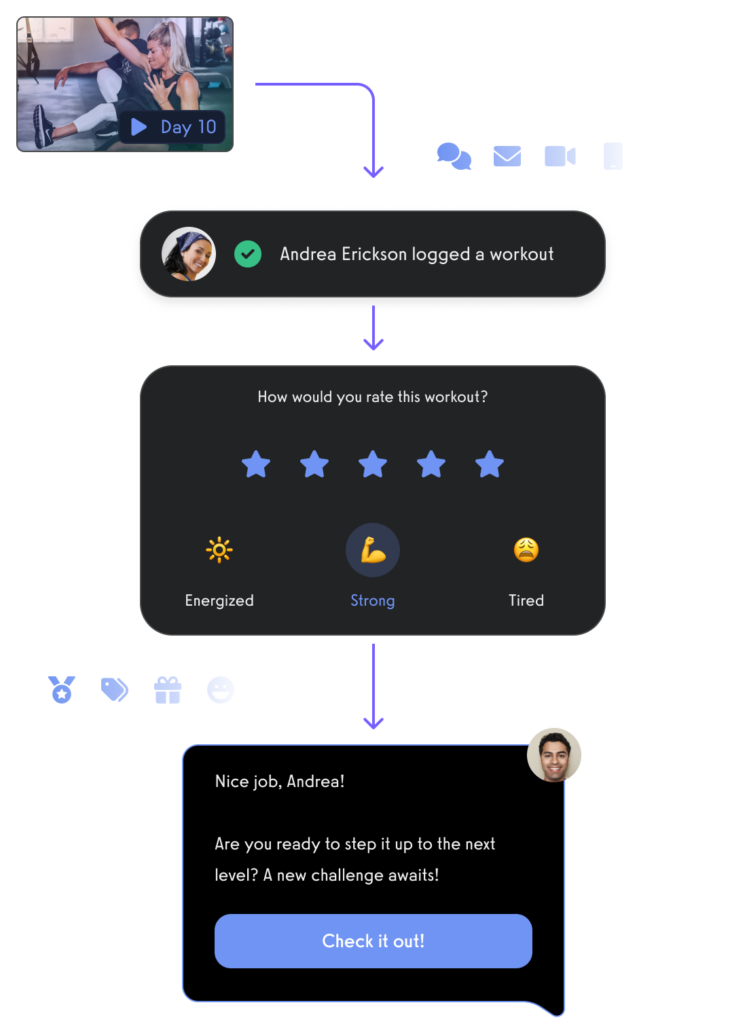
Manage leads with a fitness CRM. Read More: Best CRM Software for Gyms
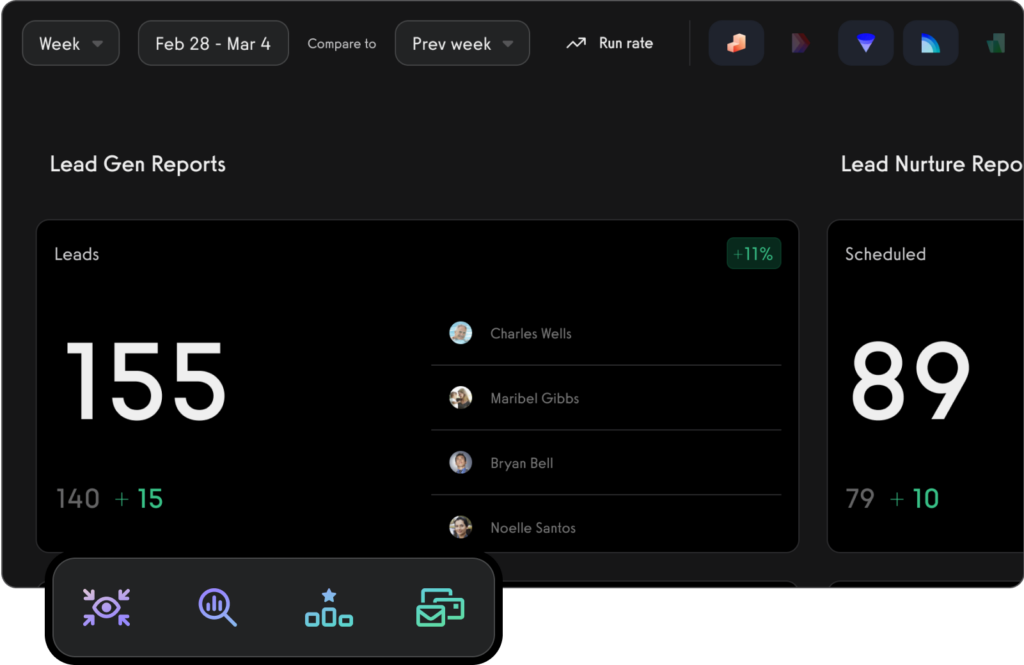
Create and send fitness assessments with ease.
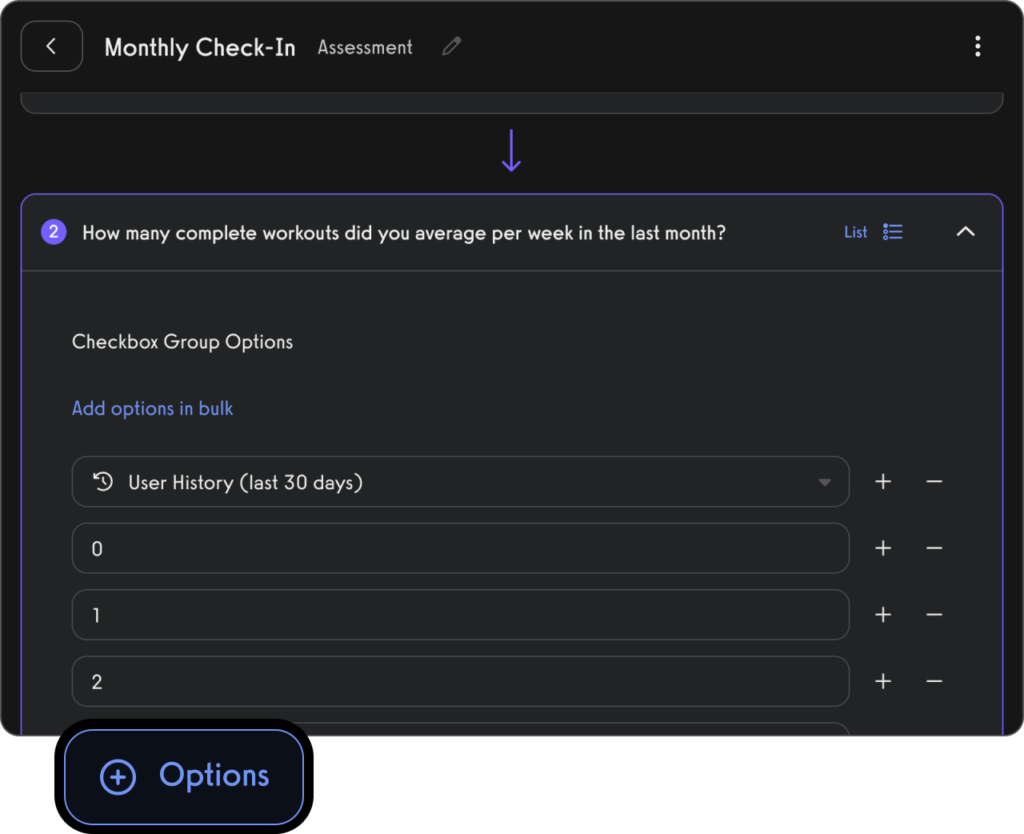
Use fitness habit tracking to inspire and motivate personal training clients (in-person and remote).

Use fitness progress photos to engage with clients.
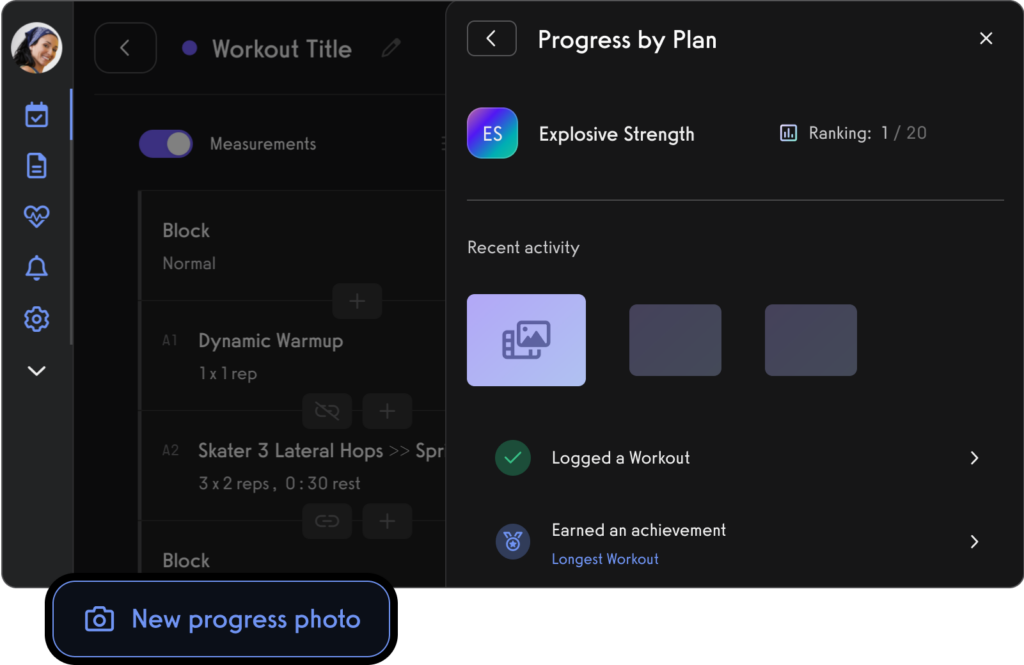
Use fitness leaderboards to track performance and inspire healthy competition.
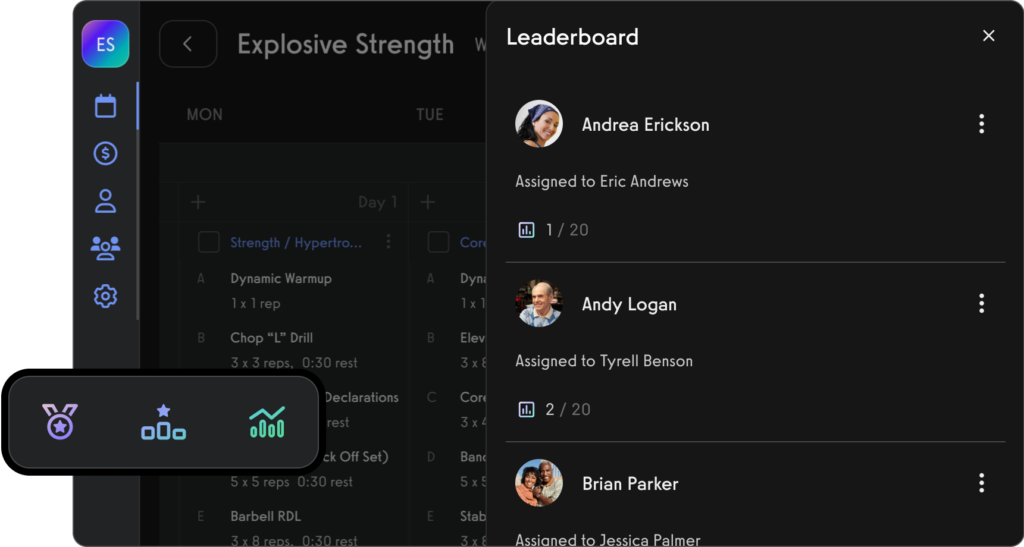
Use the exercise demonstration video library or create your own custom exercise demonstration videos.

Create workout plans for parents and dependents, teams and more.

Manage personal training clients with ease.

Book appointments for clients (Read More: Best Gym Booking Software)

Create classes and fitness groups

Manage fitness challenges (Read More: 100+ Fitness Challenge Ideas)
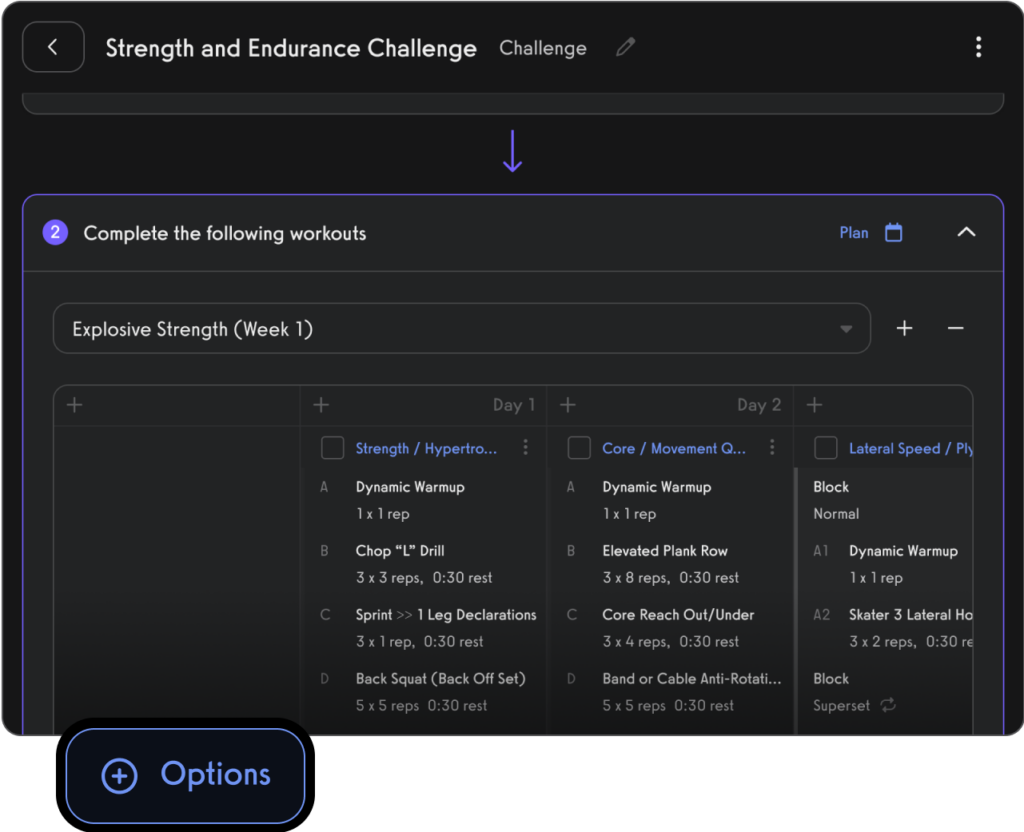
Process payments for open gym, classes, and personal training.

Communicate with gym members, athletes, team members, personal training clients, class members, parents, and dependents via SMS, email, and in-app push notification.
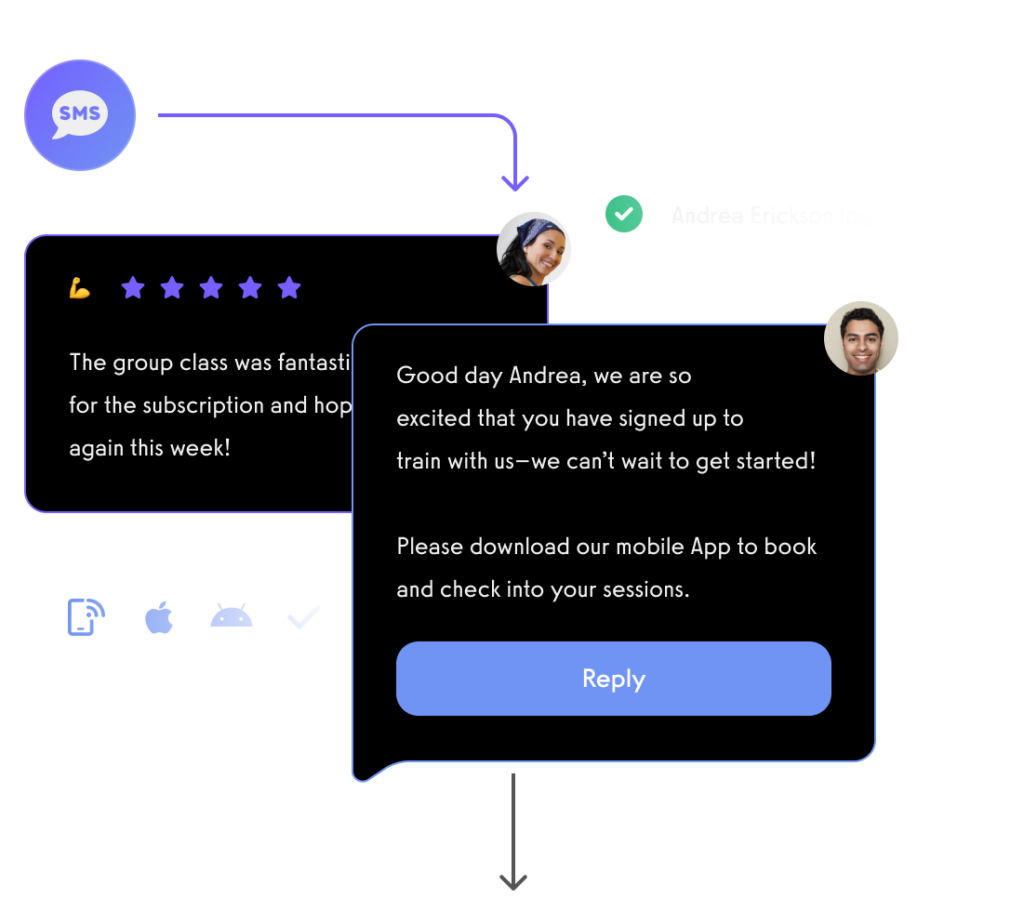
View performance over time, track personal records, and other fitness stats with performance reporting dashboards.
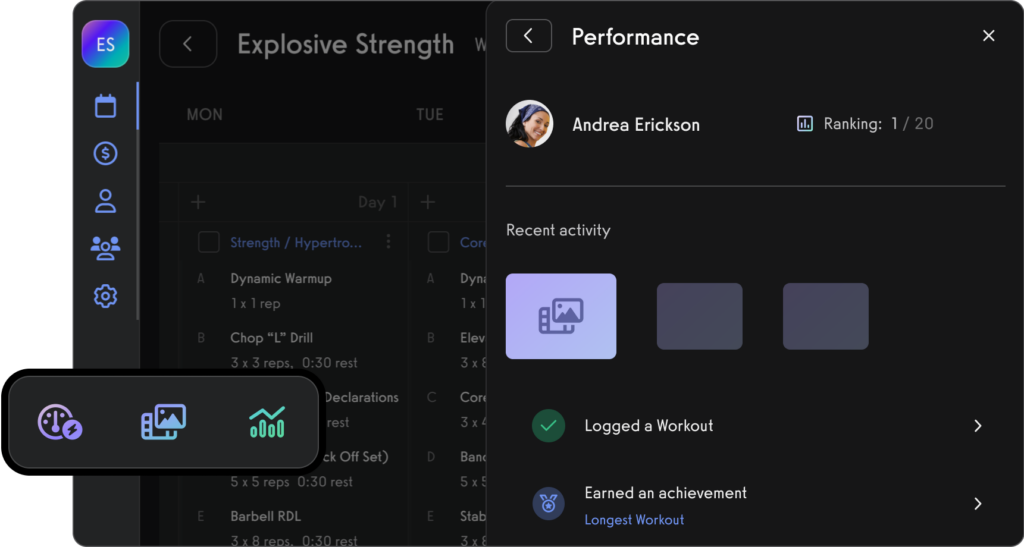
And of course, view all of your fitness business reports easily too.
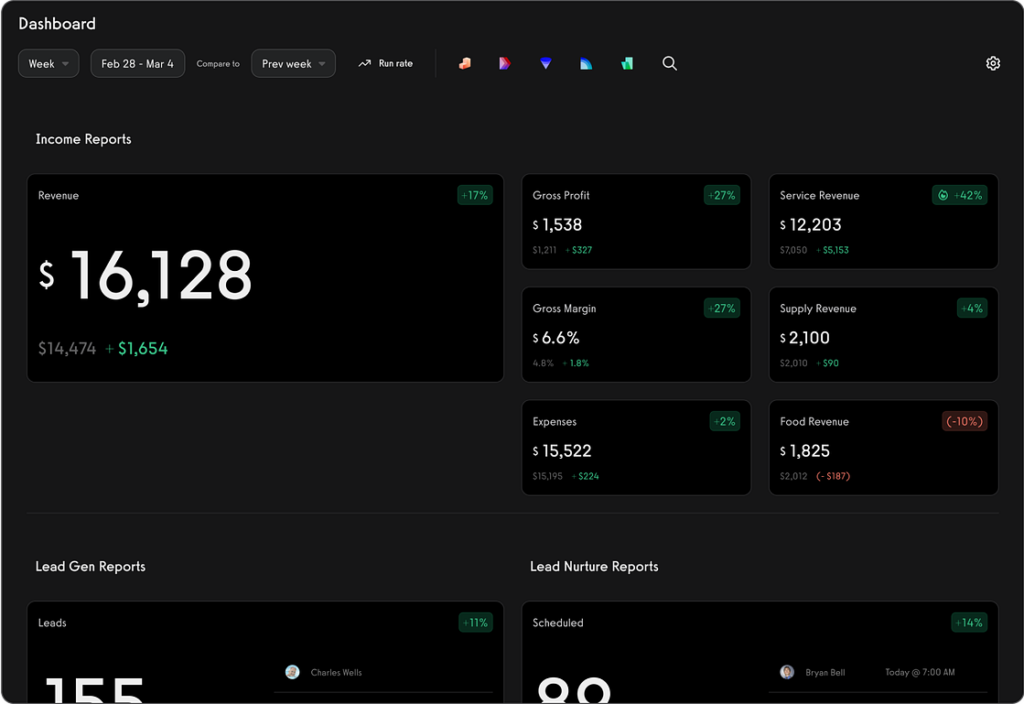
All from your custom-branded fitness apps (Read More: Best Gym Mobile Fitness Apps Software)

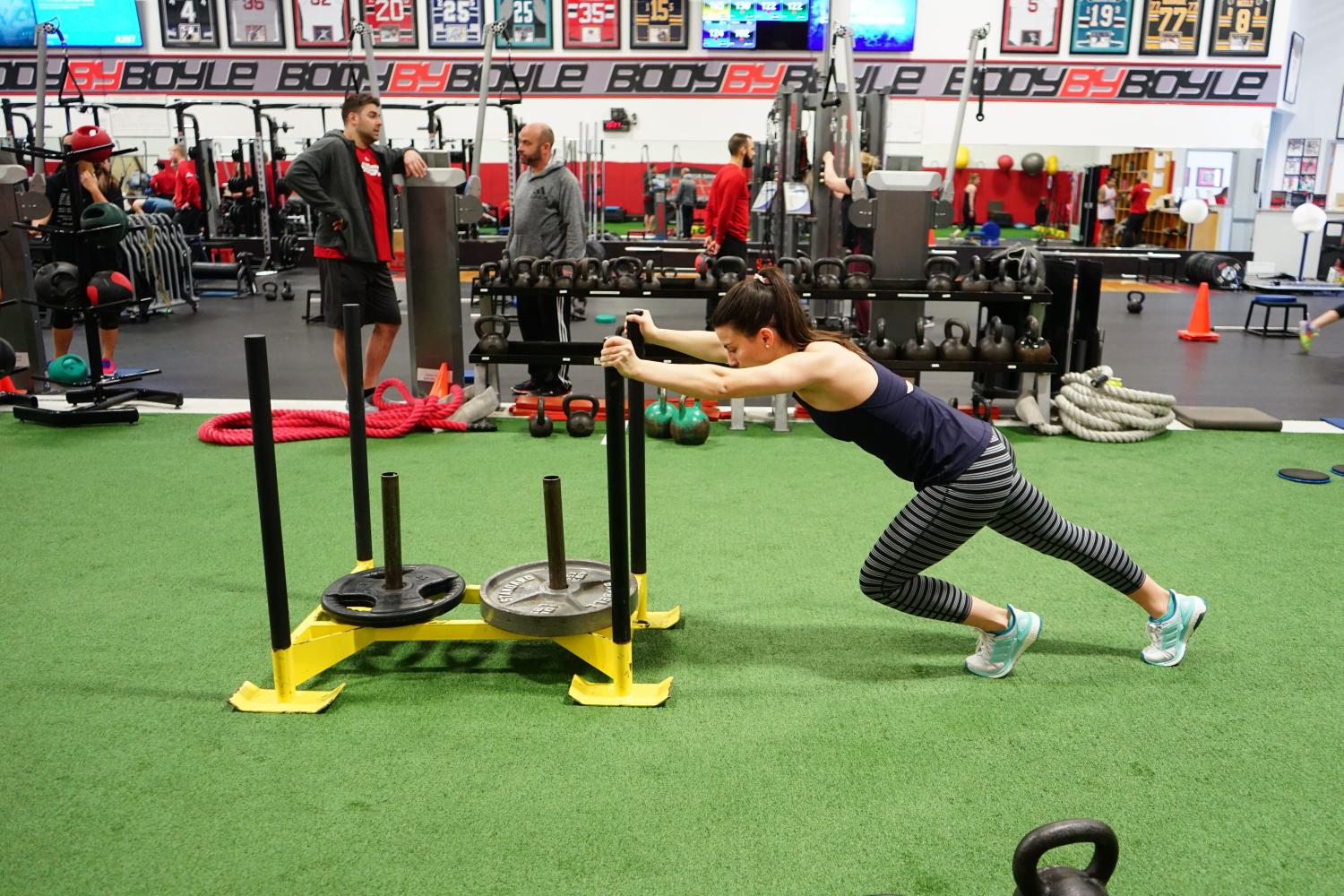
Want to learn how your fitness business can take it to the next level? Get a demo now!









